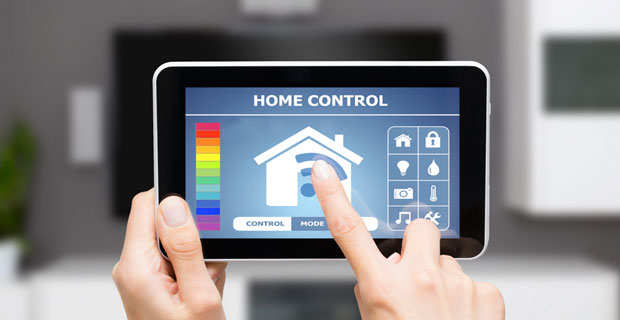Smart devices, the cornerstone of the home of the future, can’t seem to capture the imagination or open the wallets of a large number of Americans.
Some 46.7 million broadband households aren’t ready to buy a smart home device, according to a survey released this week by Parks Associates, a market research and consulting company specializing in consumer technology products, in Addison, Texas.
The households gave a number of reasons from staying away from smart home devices:
- 44 percent (20.5 million households) said the devices are too expensive.
- 38 percent (17.7 million) can’t see the benefits of the gadgets.
- 35 percent (16.3 million) are worried about data and privacy problems with the devices.
“The mere fact that over 40 percent of consumers don’t own a smart home device or don’t intend to purchase one is pretty significant,” Parks Senior Analyst Patrice Samuels told TechNewsWorld.
Price Sensitivity
Similar findings about price sensitivity were discovered by market research firm IDC, too.
“The value of the smart home still remains uncertain for many consumers, and devices and services are frequently seen as too expensive,” said Adam Wright,IDC’s senior research analyst for the smart home.
“In fact,” he told TechNewsWorld, “our 2020 U.S. Smart Home Survey shows that price/costs are the overwhelming leading barrier to smart home adoption, with more than 46 percent of respondents saying that this is the reason for why they don’t currently own or use a smart home device and are unlikely to do so in the next 12 months.”
“Not everyone can afford or is willing to pay for a $250 thermostat when they have a $25 functioning one in their home,” Julie Ask, vice president and principal analyst Forrester Research, told TechNewsWorld.
While pricing can be discouraging to consumers, more low-cost devices are beginning to reach the market, noted Blake Kozak, senior principal analyst for the smart home at Omdia.
“Our latest consumer and DIY video surveillance research found that six out of the top 10 brands were considered ‘low-cost,'” he told TechNewsWorld.
“Like consumer security cameras,” he continued, “light bulbs, smart plugs and video doorbells all offer affordable options.”
Jonathan Collins, a research director at ABI Research, though, maintained that pricing hasn’t been a key issue in the market for some time.
“Greater barriers are complexity, availability and consumer awareness,” he told TechNewsWorld.
Value Problem
The value proposition for smart home devices can puzzle some consumers.
“While many of these products are innovative and there has been early adopter demand, as well as ‘hero products’ that have taken off like thermostats and doorbells, for the most part, value perception by consumers isn’t where manufacturers think it should be,” observed Samuels.
Kozak maintained that brands are getting better at explaining use cases for smart home devices.
“Smart speakers have really led this effort,” he said. “They can augment security systems by identifying breaking glass, smoke alarms and other audio emergencies.”
“Nonetheless,” he continued, “consumers best understand products like water leak detectors, while the value of devices like smart plugs and smart light switches are less understood by consumers.”
Consumers aren’t alone in being puzzled by the worth of smart devices, added Jim McGregor, founder and principal analyst at Tirias Research.
“Even builders don’t understand the technology so they don’t want to go there,” he told TechNewsWorld. “They go with what they know, and they go with what is cost effective.”
Consumers have no problem understanding devices that automate or simplify tasks, Collins noted. “Issues arise if the solutions aren’t simple to install or customize,” he said, “or if they require a whole system to deliver simple tasks.”
Privacy Issues
Privacy remains a concern for devices that can monitor either visually or audibly, like cameras or smart speakers, Kozak observed.
In terms of reasons why a smart speaker has not been purchased, he continued, lack of need ranked highest, while privacy was second.
To protect privacy, he noted, many security camera brands now incorporate a physical shutter on the camera to prevent unauthorized viewing. In addition, many camera brands offer SD card storage as an alternative to cloud-based storage.
“Nonetheless, high-profile cases of camera hacking, like with Ring, have not deterred consumers from purchasing security cameras,” he said. “Likewise, smart speaker adoption has not been impacted following the news of individuals reviewing recordings at Apple, Amazon, Google and others.”
While privacy may be important to consumers, it isn’t of paramount importance.
“Our research finds that while privacy is an ongoing and valid concern, it’s readily pushed to the back of people’s minds in favor of the benefits and conveniences that these devices can provide,” noted IDC’s Wright.
“Thus,” he continued, “the challenge for smart home device vendors and service providers is to demonstrate clear value and deliver devices and services at an affordable price, which can overcome such privacy concerns in most instances.”
ABI’s Collins agreed that privacy concerns exist, but noted, “we have seen over the years that if a service is priced attractively and perceived to be valuable, privacy is not a major concern for a large percentage of consumers.”
“That is not to say, this will stay that way and that consumers may not become more privacy aware or demanding in the future,” he added.
Further Snags
Ease of use and interoperability can also be discouraging consumers to buy smart home devices.
“Ease of use is the second leading factor that consumers consider as being important when purchasing and setting up internet-connected devices and applications in the home,” Wright observed.
“Smart assistants, however, are helping to overcome this barrier — and quickly — by dramatically enhancing the accessibility, use, and functionality of smart home devices and simplifying their operation,” he added.
For consumers who want to mix and match smart home devices, getting devices to talk to each other can be a network of babble.
“When we ask consumers what’s important to them when purchasing a smart home device, one factor that always rises to the top of the list is that they want it to work with the other products in their home,” advised Parks’ Samuels.
For McGregor, who is building a home and wants to make it smart, interoperability is a big issue.
“I want to make the house smart, but I don’t want to have 100 IP addresses pinging the cloud from it, especially when I’m on a satellite connection with a data cap and limited bandwidth,” he explained.
In addition, he noted, “If I have a 100 items accessing the web, I have a 100 potential security holes in my network.”
“Plus, a lot of these things don’t talk to each other,” McGregor added. “When you have to have 15 different apps to control your house, it’s a little ridiculous.”
























































Avoid it, the more control you have over your things the better, dont give it away to them